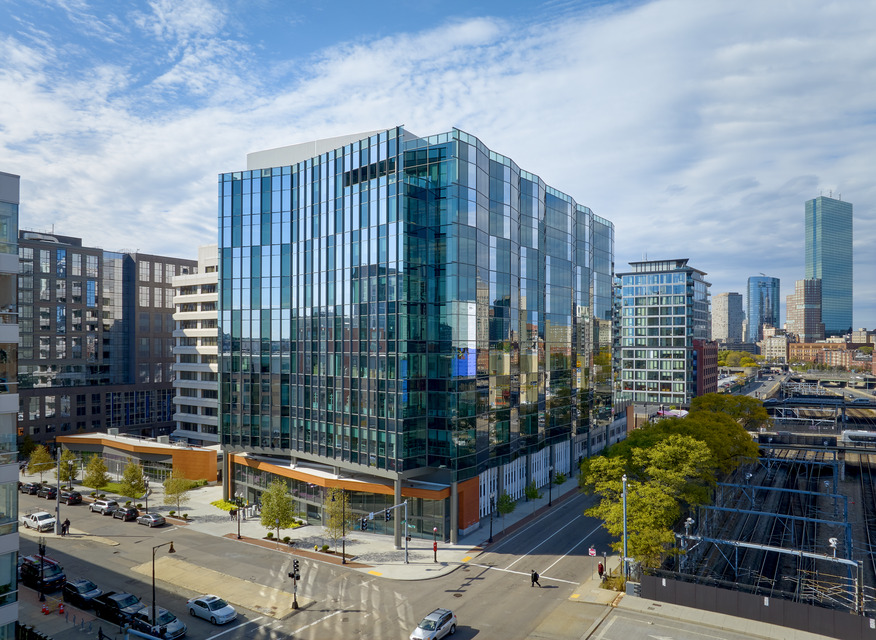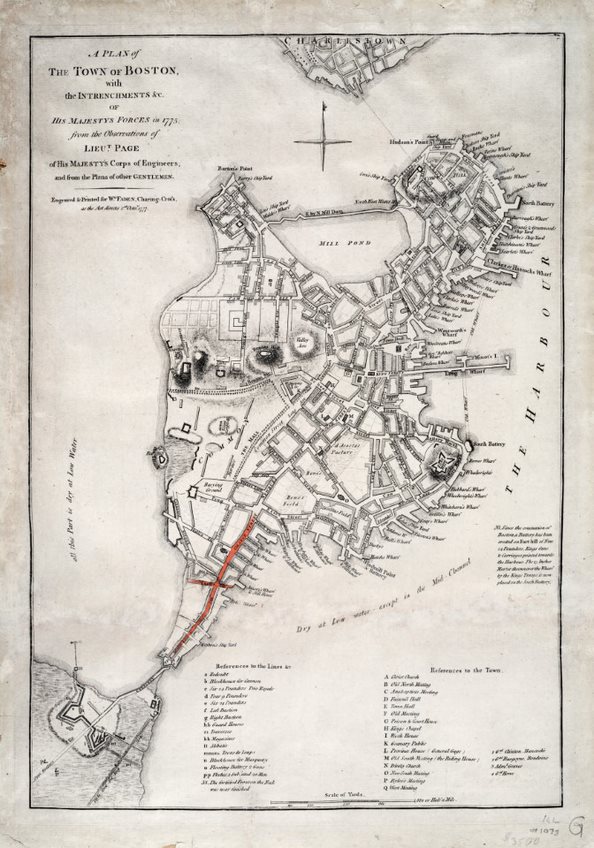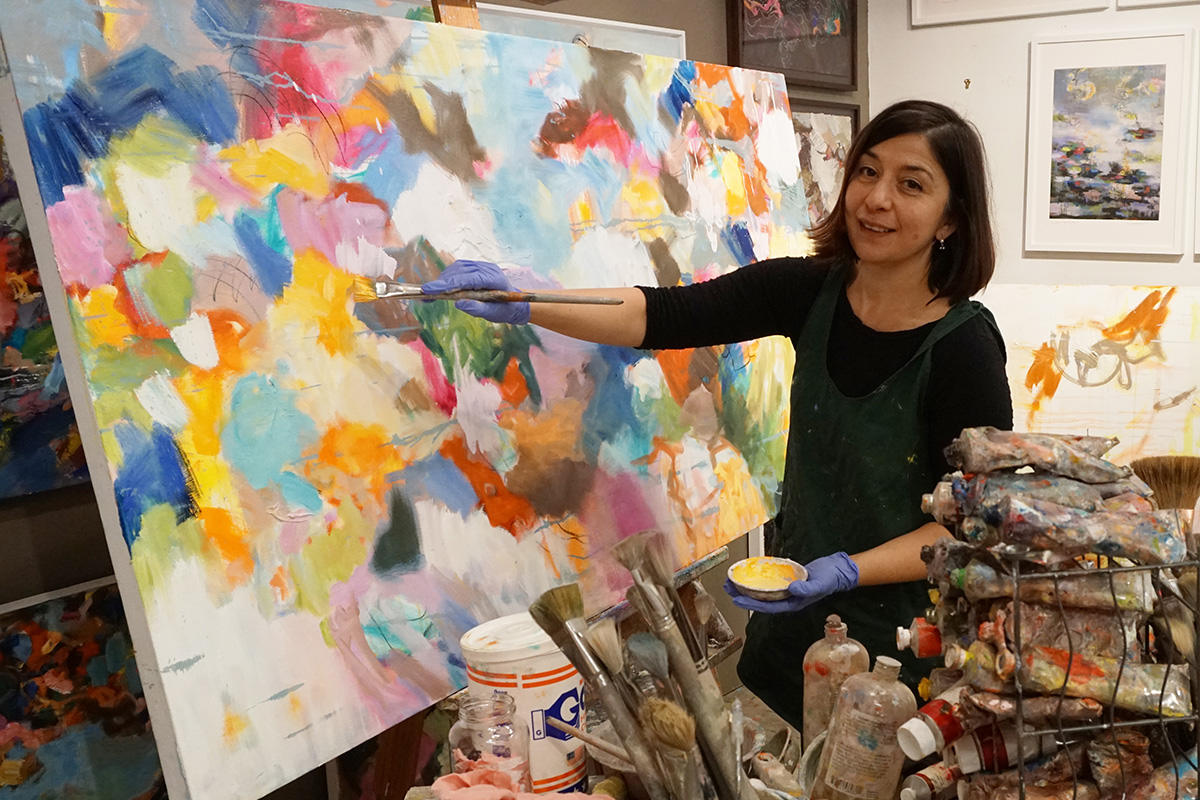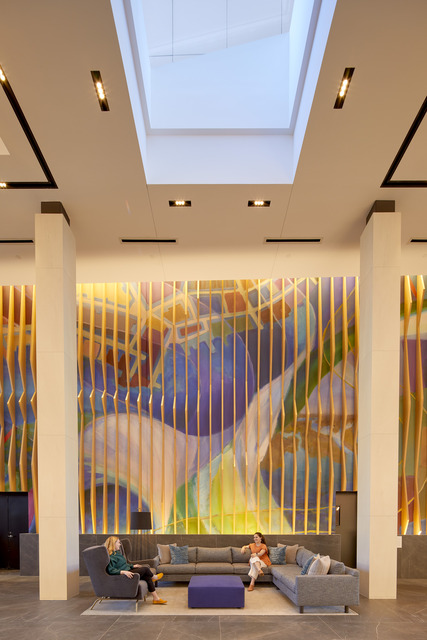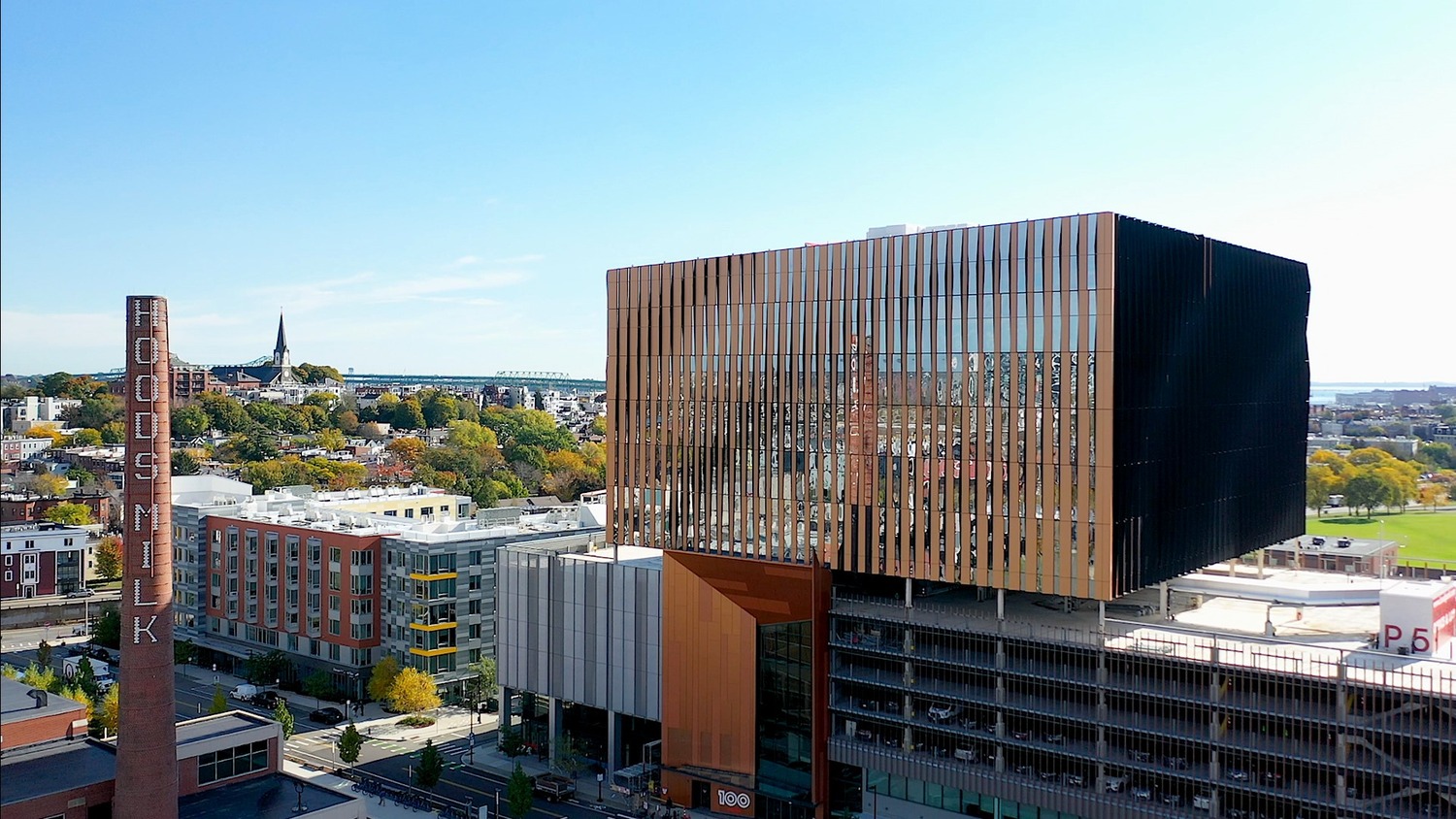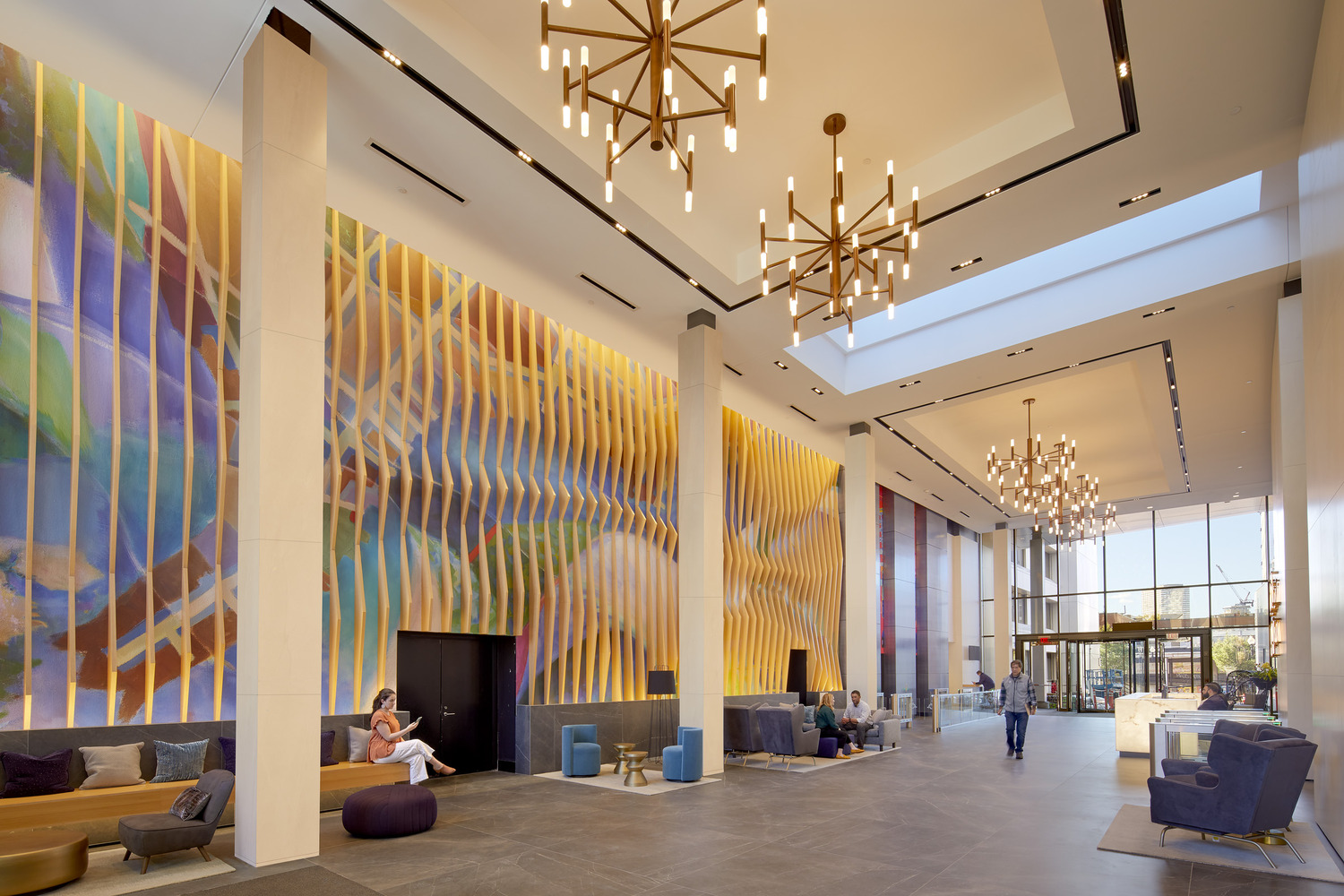
At a new 11-story office tower on the northernmost edge of Boston’s historic South End, a neighborhood story unfolds at street level.
The story is revealed not in words, but in the abstract artistry of Nedret Andre and a new interior connector at 321 Harrison Avenue that re-establishes a long-lost South End side street.
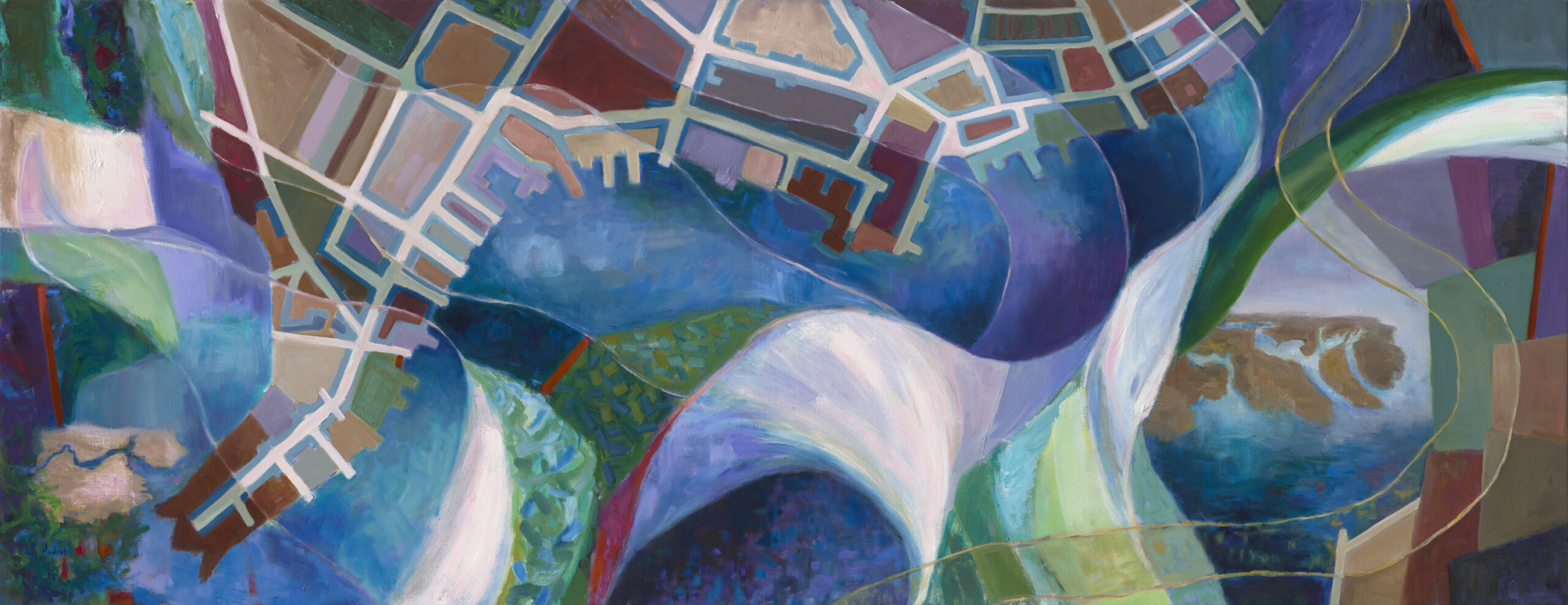
Andre’s colorful painting is named Sustaining Life.
Commissioned by 321 Harrison Avenue’s development partners, it is displayed inside the tower’s connector lobby and passageway that links Harrison Avenue and Washington Street. Andre’s creation spans an entire wall as a large-scale, 23-foot by 60-foot exhibit.
“We wanted something distinctive and colorful that helped activate the space and make it a welcoming visitor experience.”
Emily Modoono, Senior Interior Designer, SMMA
The tower’s development and design team wanted to create an inspiring and playful focal point within the connector lobby.
|
What emerged from the designers testing out of several different options was the idea of a specialty art piece, something distinctive that could be experienced differently, depending on someone’s vantage point.
“Then the big idea materialized,” recalled Emily Modoono, Interior Designer and Senior Associate at SMMA. “Why not commission a local artist to create something connected with the history of the site and the neighborhood? We are building next to the SOWA arts district and all these wonderful artists. It’s turned out even better than we ever expected.”
321 Harrison Ave
View Project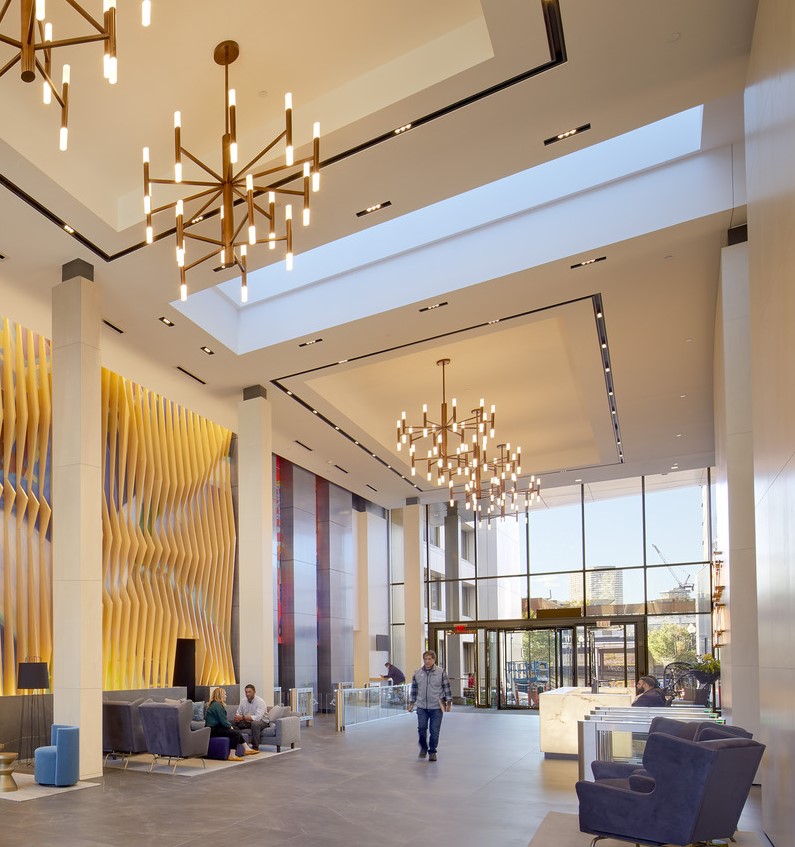
A New Community Connection Space
A 60-foot two-story interior passageway serves as an anchor space, lobby, and entrance point. It knits together the new 321 Harrison Avenue tower and its companion building, an existing mid-century office building at 1000 Washington Street. The connector’s interior offers a hospitality feeling, a linear living room with warm lighting, finish materials, and fabric furniture.
“With this street-level connector space we reimagined Lovering Place, which was once was a block-long link between Harrison and Washington Street.”
Mark Spaulding, AIA, Principal
“In urban settings, the open spaces between city buildings often provide surprising opportunities to introduce new ideas and experiences.”
At the east end of the two-story passageway on Harrison Ave, pedestrians from the Ink Block residences or the Whole Foods Market can walk through the space to reach the Silver Line transit stop on Washington Street.
Linking History, Art, and Architecture
Andre, a South End artist whose Harrison Avenue studio is just a few blocks away from the building, describes the inspiration behind her 321 Harrison artwork:
“This painting bridges community, history, and a love for our natural habitat that has sustained us through time. Sustaining Life weaves together elements of both being in water and looking from above with composite perspectives of Boston. It is a metaphor for the interconnectedness of all life.”
The water metaphor connects with the project site’s rich history, a textured and ever-evolving urban land story. In the Colonial days of the late 1700s, a narrow causeway provided the only access point to what was then an island called the Town of Boston.
Travelers entered Boston via the Shawmut Peninsula at the southern tip of the island and then ventured up Orange Street, which is today’s Washington Street (and the naming source of the MBTA Orange Line).
The South End, and all of colonial-era Boston, was encircled by water and tidal marshlands. City maps from that period reveal an active waterfront with a collection of commercial wharves and fishing piers jutting out from the land to the bay.
The contrasting edges between land use and water bodies, illustrated in the maps, provided inspiration and ideas for Andre’s early-stage conceptual studies.
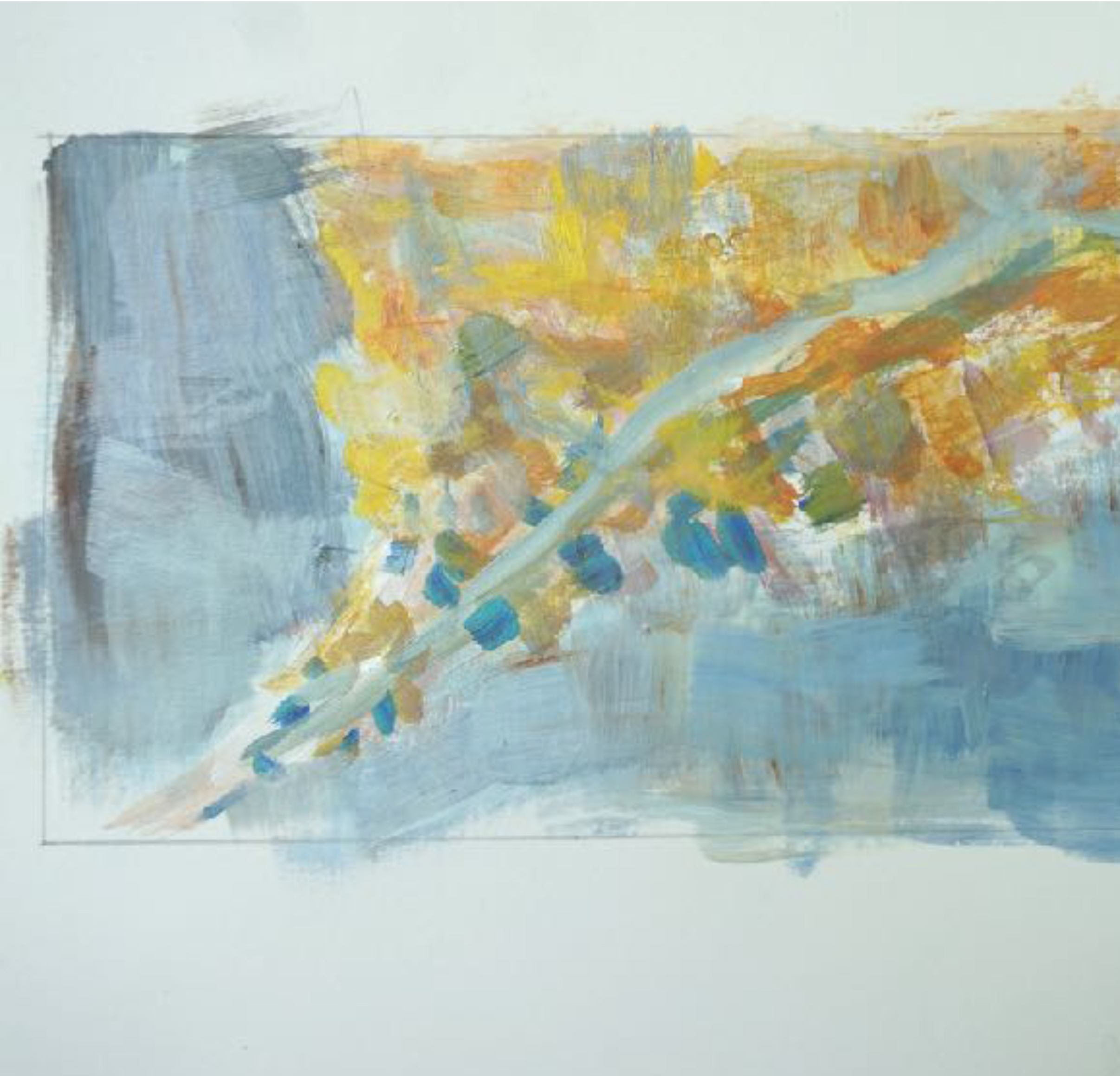
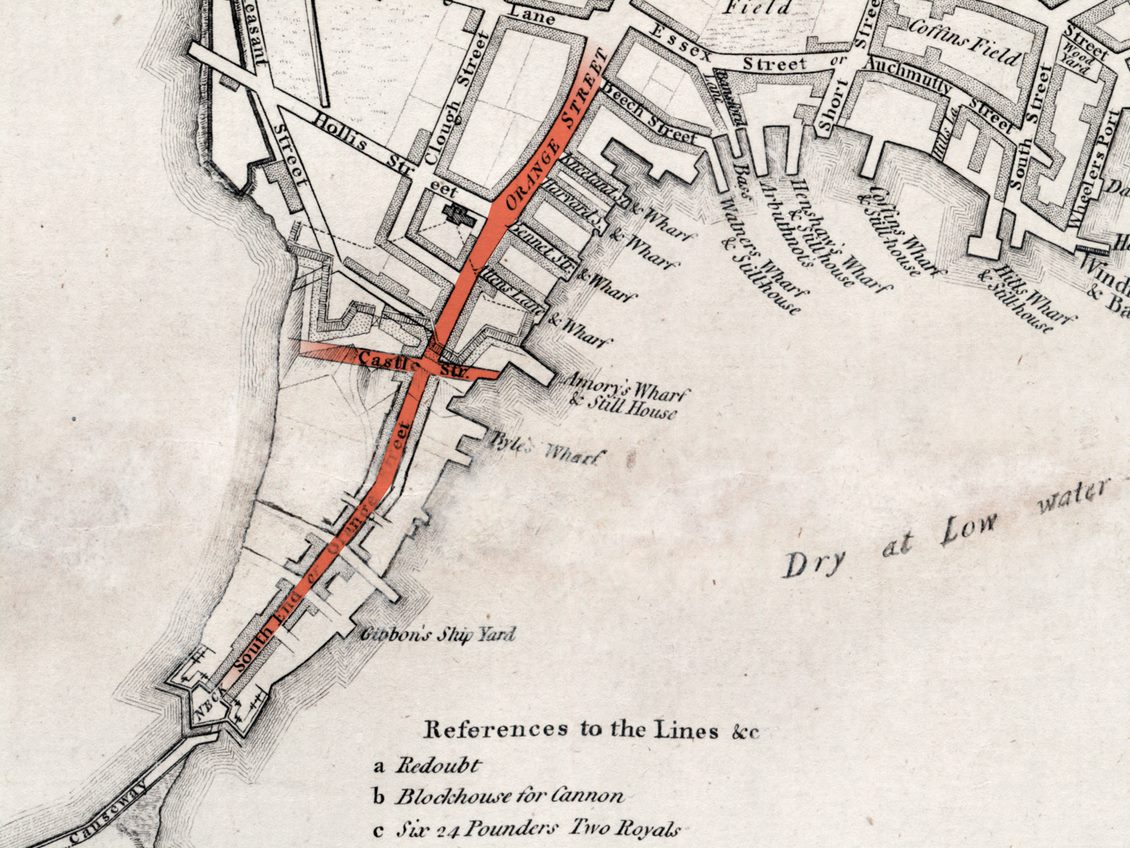
“Most of my paintings in recent years are about our environment, more specifically about seagrass habitats,” Andre said.
“Our seagrass here in Massachusetts is called Zostera Marina, or more commonly known as eelgrass. It is a crucial contributor to our ecosystem that feeds and sustains the region going back for centuries. My work is inspired by eelgrass restoration projects and my collaborations with local marine ecologists. I love being in the field with these wonderful scientists, helping to bring awareness to the vital importance of this ecosystem.”
Providing a Sense of Place through Abstract Storytelling
Andre’s painting is a collage-style, expressionistic experience for viewers. “It captures the magnitude of the special role seagrass plays in our lives today. Seagrass was found beneath our feet as they were digging the foundation for this building.”
She cites how Boston’s expansion and infilling of waterways and estuaries in the 1800s pushed the edges of the seagrass habitats further out as the original shorelines shifted.
“To represent these historical shifts”, she explained, “I embedded several different maps of Boston within a larger field of color. Throughout the painting, I embedded my interpretation of maps from different periods. The abstract transparent seagrass blades bridge the past, present and future and overlap different maps from different periods in history. For the dominant map in the painting, I borrowed linear elements from a historical 1775 Town of Boston illustration. It arches up diagonally across the painting and sits in the background. If you look closely, you can see our current location marked in red on the lower left side of the painting. I added red lines throughout the painting to show the building site. You can see how we were basically at the shoreline.”
When asked about what she hopes the response and takeaway will be, she imagines that people will see it “as an invitation to be part of something important to our collective future. I hope it is seen as a reminder that we all have a role to play in sustaining our fragile ecosystem. Our individual thoughts and actions make a difference.”
A Changing View, a Gradual Read
SMMA’s design for the lobby and art installation adds a distinctive twist to enliven the way Andre’s Sustaining Life is seen. A screening system in the form of curved wood slats playfully alters a visitor’s view of the artwork as they move through the lobby space.
“Depending where you are standing or sitting, and whether you see it up close or looking in from the outside, you read it in different ways,” Modoono explained. “If you are in front of it, you lose the view of the slats and see the artwork in full. But as you walk past, the wood slats begin to undulate and create their own shape and form while hiding a portion of the art.”
This unveiling of different views and discoveries provides “a slow read, like opening the pages of a book,” Andre observed.
